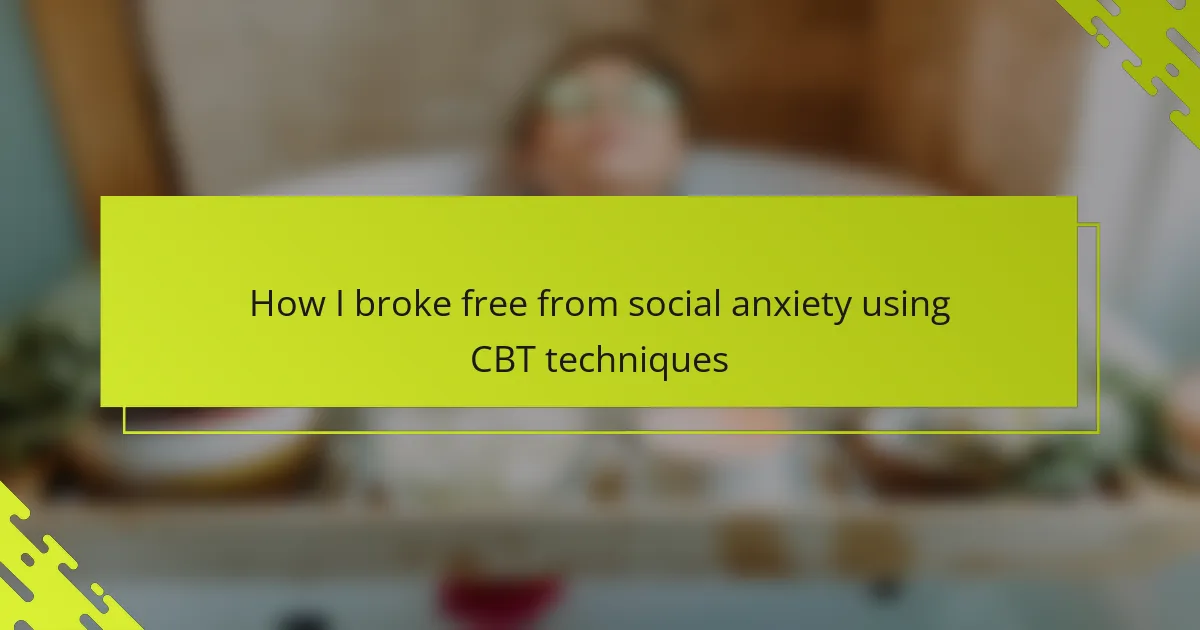Key takeaways
- Social anxiety in queer women is often linked to identity visibility and fear of judgment, contributing to feelings of isolation and self-doubt.
- Cognitive Behavioral Therapy (CBT) offers practical tools, such as thought records and grounding techniques, to challenge and manage anxious thoughts and feelings.
- Building confidence through CBT involves reframing social interactions as experiments, breaking fears into manageable steps, and recognizing that responding differently to anxiety fosters resilience.
- Long-term anxiety relief requires consistent practice of CBT techniques and community support to reinforce progress and address early signs of anxiety.
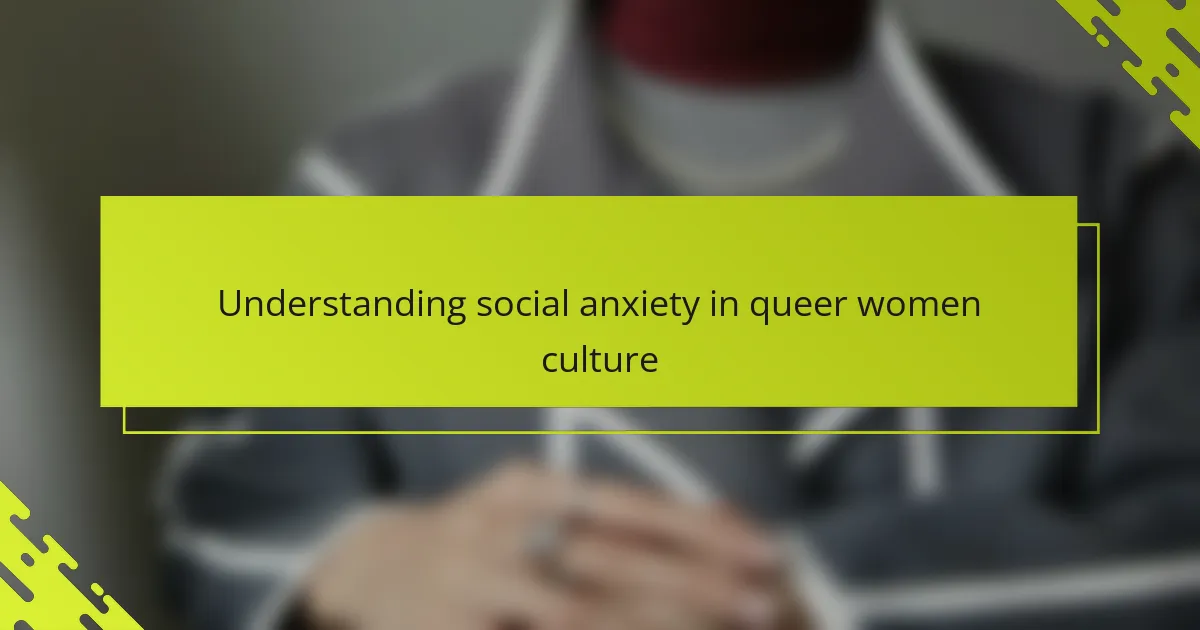
Understanding social anxiety in queer women culture
Social anxiety in queer women culture often feels like standing outside a party where everyone else knows the secret handshake — it’s a mix of longing and isolation that can be hard to shake. I remember feeling this tension acutely at gatherings, wondering if my quirks fit into the unspoken norms or if I’d be suddenly “outed” as the awkward one in the room.
Why does social anxiety hit so differently here? I think it’s tied to layers of identity — being both visible and invisible at once, constantly navigating spaces where acceptance isn’t always guaranteed. That constant balancing act can amplify self-doubt and make every interaction feel like walking a tightrope.
In my experience, understanding this unique flavor of anxiety helped me pause and ask, “What am I really afraid of?” Often, it wasn’t rejection by others but the fear of not fully being seen or understood. Recognizing this was the first step toward breaking free.
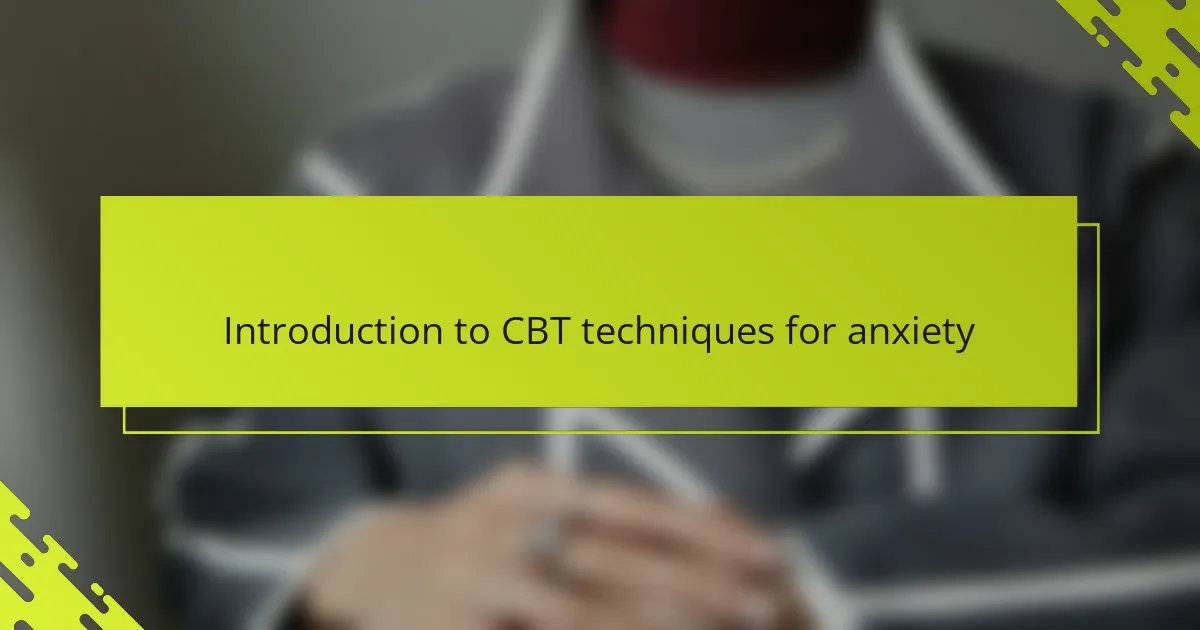
Introduction to CBT techniques for anxiety
Cognitive Behavioral Therapy (CBT) intrigued me because it didn’t promise a magic cure but offered a practical toolkit to challenge the flood of anxious thoughts. Have you ever noticed how your mind can spiral, picturing the worst-case scenario before a simple hello? CBT teaches us to pause, identify these patterns, and gently question their truth.
One technique that stuck with me was thought records — writing down my anxious thoughts and then weighing the evidence for and against them. It felt strange at first, almost like arguing with myself, but over time, it became a way to separate emotion from reality. I realized anxiety often thrived in unchecked assumptions, and CBT showed me how to check those assumptions.
What really made CBT different was how it connected my thoughts, feelings, and behaviors as parts of a loop I could influence. Understanding this helped me see social anxiety less as an uncontrollable force and more as a habit I could rewrite. That shift in perspective was empowering—it felt like taking back the pen to my own story.

Common social anxiety triggers for queer women
For many queer women, social anxiety often sparks in moments when we fear being judged not just for who we are, but how we express that identity. I remember feeling a knot in my stomach at events where I wasn’t sure if my style or pronouns would land well — that uncertainty peeled back layers of anxiety I hadn’t fully acknowledged before.
There’s also this invisible pressure to “perform” queerness the “right” way, which adds another heavy weight. Have you ever caught yourself scanning faces, searching for allies or signs of acceptance, only to freeze when you don’t find what you expect? That kind of hyper-awareness can turn what should be joyful connections into exhausting self-surveillance.
And then there’s the fear of accidental outing, a trigger that taps into the deep-rooted worry of losing control over your story. I found this anxiety hanging over me like a cloud, especially in new or mixed spaces where I wasn’t sure who knew what about me. It’s a unique kind of stress that can make even casual interactions feel like navigating a minefield.
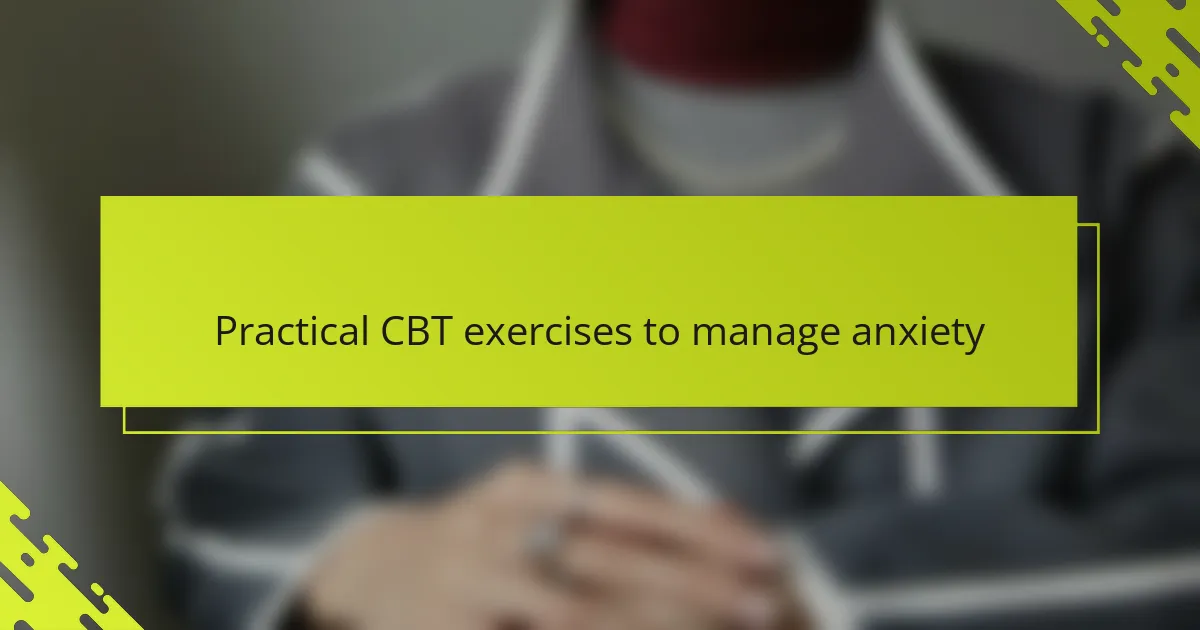
Practical CBT exercises to manage anxiety
One practical CBT exercise that really grounded me was the “5-4-3-2-1” grounding technique. When my anxiety felt overwhelming, I’d list five things I could see, four I could touch, three I could hear, two I could smell, and one I could taste. This simple sensory check-in helped me step out of my spiraling thoughts and into the present moment — it’s like hitting pause on the noise in my head.
Another exercise I found powerful was challenging my “what if” thoughts. I’d catch myself imagining the worst social scenario, like being rejected or misunderstood, and then write down a more balanced outcome. For example, instead of “They’ll think I’m weird,” I’d remind myself, “Some people may not get me, but others will appreciate my authenticity.” Have you tried reframing those anxious predictions? It felt like slowly turning down the volume on my inner critic.
Finally, behavioral experiments became a game-changer. I started small, like initiating brief conversations at queer meetups, and noted how my anxiety shifted before, during, and after. Observing that my fears often didn’t match reality was freeing. It made me realize that anxiety is a habit I can rewrite, one brave step at a time.
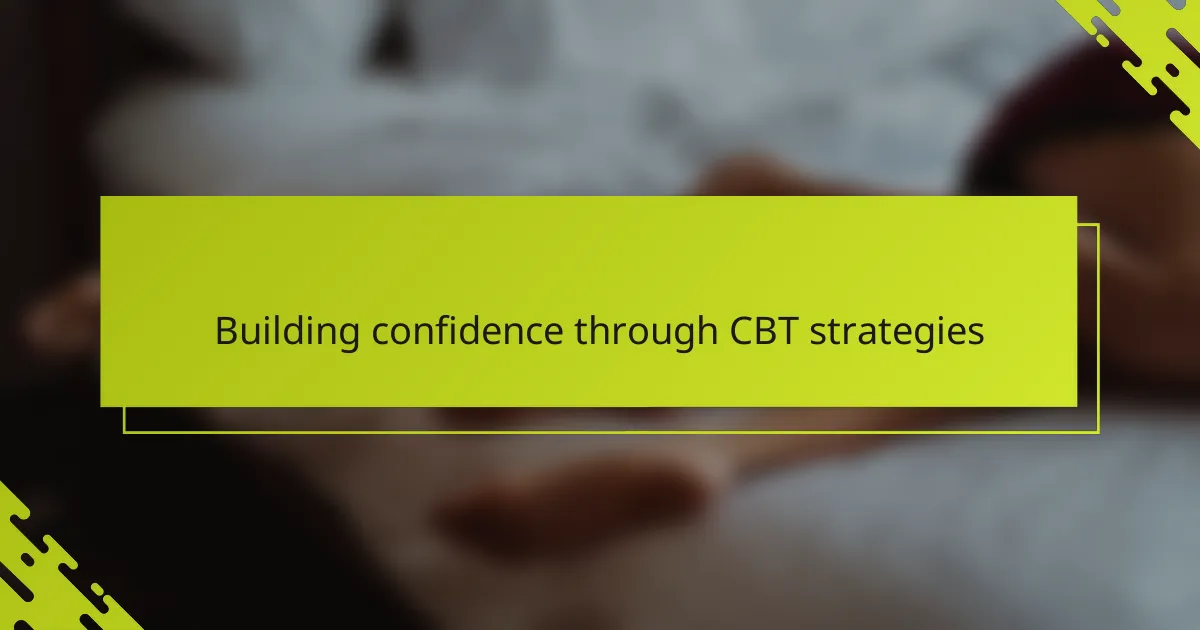
Building confidence through CBT strategies
Building confidence through CBT strategies felt less like a sudden burst of bravery and more like rewiring a quiet, persistent voice inside me. Have you ever noticed how self-doubt creeps in just before you speak up or step into a new space? By using CBT techniques, I learned to catch those moments and gently challenge the harsh judgments my mind threw at me.
One of the most empowering shifts for me was breaking down overwhelming fears into manageable steps. For instance, I practiced visualizing social interactions as experiments rather than tests — this subtle change in approach helped me feel less like I was on trial and more like a curious explorer. Each small success added a brick to my confidence, slowly building a foundation that felt real and steady.
What really changed the game was recognizing that confidence isn’t about perfection or never feeling anxious; it’s about learning to respond differently to those anxious feelings. CBT gave me tools to pause, reflect, and choose actions that supported my sense of self-worth — and that, to me, has been the heart of building authentic confidence.
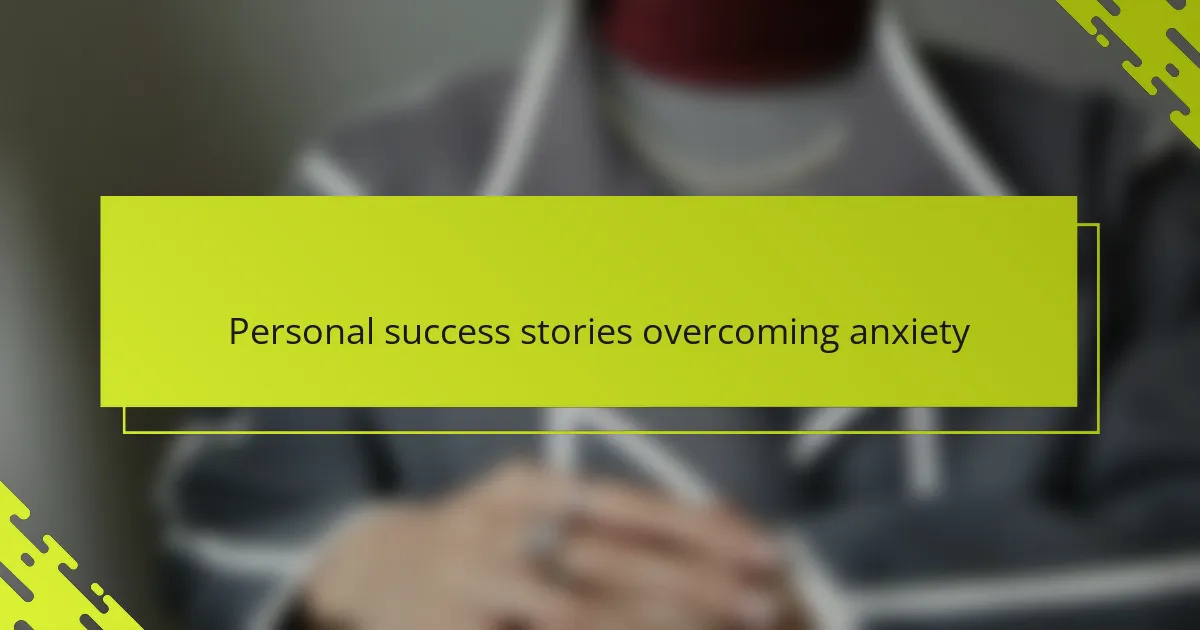
Personal success stories overcoming anxiety
Hearing other queer women share their stories of overcoming social anxiety was a lifeline for me. One friend talked about how she used CBT to slowly dismantle her fear of speaking up at community events—she described it as peeling back layers of a heavy cloak she’d worn for years. Have you ever found that connection with someone who really gets what you’re going through? That kind of shared experience can be incredibly validating and motivating.
Another story that stayed with me was from a woman who struggled with panic attacks triggered by the fear of being outed in public spaces. She used thought records to challenge the catastrophic “what ifs” that dominated her mind. I admired how she transformed those overwhelming fears into manageable questions, like “What’s the actual evidence that someone will judge me?” Her persistence reminded me that progress often comes in small, deliberate steps.
I also remember feeling inspired by a queer woman who treated her social anxiety like a puzzle to solve rather than a flaw to hide. By experimenting with gradual exposure exercises, she rewrote her relationship with anxiety from one of avoidance to curiosity. It made me wonder: What if we all approached our anxieties as challenges we could meet, rather than barriers we had to accept? Hearing these stories gave me hope that breaking free is possible — one thought and one brave choice at a time.

Maintaining long-term anxiety relief with CBT
Long-term relief from social anxiety using CBT felt less like crossing a finish line and more like tending a garden — it required ongoing care and attention. I found that consistently practicing techniques like thought challenging and behavioral experiments helped me catch early signs of anxiety before they snowballed into overwhelming episodes. Have you noticed how skipping these small check-ins can let old fears quietly creep back in?
What really stuck with me was the realization that CBT isn’t about erasing anxiety completely but about building resilience. Even now, when I face a triggering situation, I remind myself that it’s okay to feel anxious, as long as I use the tools I’ve learned to navigate it. This mindset shift was crucial for maintaining my progress over time.
Sometimes, maintaining relief means leaning into community support alongside CBT strategies. Sharing my experiences with other queer women who get the nuances of our social spaces reinforced my commitment to these techniques. It’s one thing to have a toolbox, but it’s another to have people who remind you why picking it up matters every day.
